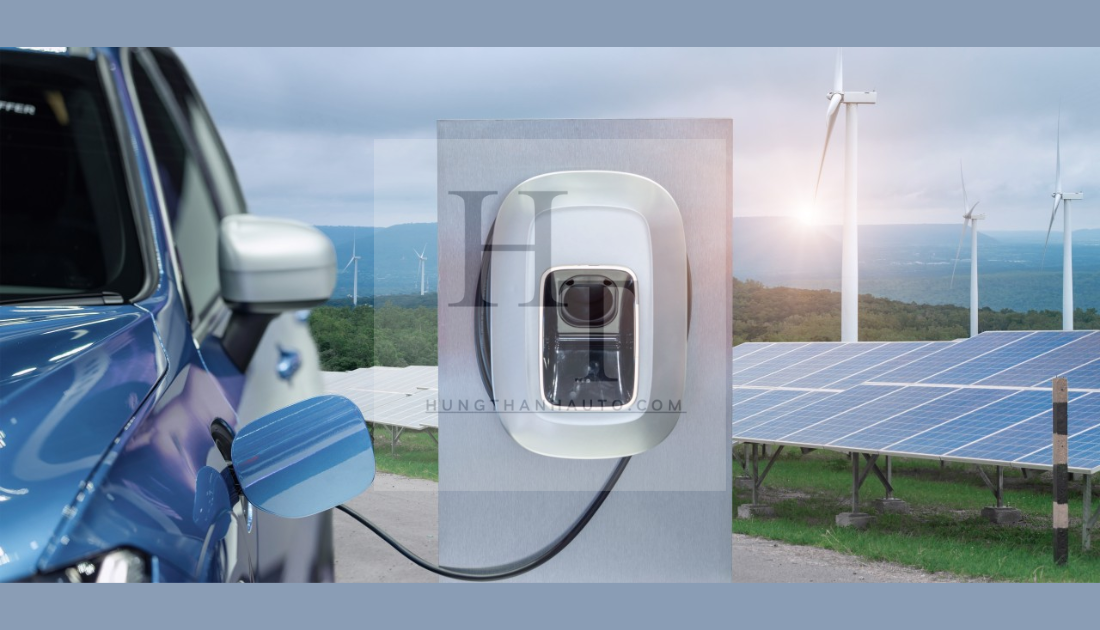EV Charging Infrastructure: Powering the Electric Revolution
As the world transitions toward a greener future, the demand for EV charging infrastructure is skyrocketing. With electric vehicles (EVs) rapidly gaining popularity, the development of efficient and accessible charging networks is essential to support this shift. EV charging infrastructure serves as the backbone of the electric mobility ecosystem, ensuring drivers can recharge their vehicles conveniently and sustainably.
This article explores the importance of EV charging infrastructure, its current state, the challenges faced, and the future outlook for this critical technology.
Why EV Charging Infrastructure Is Essential
The growth of EVs depends heavily on the availability of reliable charging networks. Without accessible infrastructure, potential buyers may hesitate to transition to electric vehicles due to concerns about range and convenience.
1. Addressing Range Anxiety
Range anxiety—the fear of running out of charge before reaching a charging station—is one of the biggest hurdles for EV adoption. A well-planned EV charging infrastructure alleviates this concern, enabling drivers to travel long distances with confidence.
2. Supporting Sustainability Goals
Charging infrastructure promotes the adoption of EVs, which produce zero tailpipe emissions. By reducing reliance on fossil fuels, it contributes to lowering global carbon footprints and achieving environmental sustainability goals.
3. Enhancing Economic Growth
The expansion of charging infrastructure generates economic benefits by creating jobs in construction, maintenance, and technology development. It also supports the EV market, which is poised to become a significant driver of economic growth.
4. Increasing Consumer Confidence
Widespread charging availability makes EVs a more practical choice for everyday use. It encourages consumers to switch from traditional internal combustion engine vehicles to cleaner, electric alternatives.
Types of EV Charging Stations
EV charging infrastructure encompasses various types of charging stations, each catering to different use cases and environments.
1. Residential Chargers
These chargers are installed at homes, providing EV owners with the convenience of overnight charging. Most residential chargers are Level 1 or Level 2, offering a balance between cost and charging speed.
2. Public Charging Stations
Located in shopping centers, parking lots, and along highways, public charging stations are vital for on-the-go recharging. They include Level 2 and DC fast chargers, catering to short stops and quick top-ups.
3. Workplace Chargers
Workplace chargers are installed at office buildings to provide employees with access to convenient charging while they work. These chargers encourage EV adoption among commuters.
4. Ultra-Fast Chargers
Ultra-fast chargers, capable of delivering significant power in minutes, are essential for long-distance travel. These are typically located along major highways and travel routes.
5. Fleet Charging Stations
Fleet operators, such as delivery services and public transportation, require dedicated charging hubs to maintain operations efficiently. These stations are tailored for heavy usage and multiple vehicles.
Key Components of EV Charging Infrastructure
Developing an efficient EV charging network involves integrating various components to ensure seamless functionality.
1. Charging Hardware
The physical chargers must meet safety and performance standards. They vary in power output, ranging from 3 kW Level 1 chargers to 350 kW ultra-fast chargers.
2. Software Management Systems
Smart software platforms manage charging sessions, monitor energy consumption, and provide real-time data on station availability. These systems enhance user experience and operational efficiency.
3. Energy Sources
Integrating renewable energy, such as solar or wind power, into charging infrastructure reduces the carbon footprint of EVs further. Energy storage solutions also help balance grid demand.
4. Connectivity
Most modern chargers are connected to the internet, enabling remote monitoring, diagnostics, and updates. Connectivity also facilitates payment processing and navigation apps.
5. Government Policies and Incentives
Supportive policies play a crucial role in expanding EV charging infrastructure. Subsidies, tax credits, and grants encourage private investment and accelerate development.
Challenges in Building EV Charging Infrastructure
Despite its importance, scaling up EV charging infrastructure comes with challenges that require innovative solutions.
1. High Initial Costs
Installing charging stations, especially DC fast chargers, involves significant capital investment. Government incentives and public-private partnerships can help offset these costs.
2. Grid Capacity Constraints
As EV adoption grows, the additional demand on electricity grids could strain infrastructure. Smart grid technologies and energy storage systems are essential to address this issue.
3. Lack of Standardization
Different EV models use varying charging connectors and protocols. Developing universal standards is crucial to ensure compatibility and user convenience.
4. Uneven Coverage
While urban areas often see rapid infrastructure development, rural and remote regions lag behind. Expanding coverage to underserved areas is vital for equitable access.
5. Consumer Awareness
Many potential EV buyers remain unaware of the availability and benefits of charging infrastructure. Educational campaigns and visible charging networks can boost consumer confidence.
Benefits of Expanding EV Charging Infrastructure
Investing in EV charging infrastructure delivers numerous benefits for individuals, businesses, and society.
1. Increased EV Adoption
A robust network reduces range anxiety, encouraging more consumers to choose EVs. This accelerates the transition to sustainable transportation.
2. Economic Opportunities
The growth of charging infrastructure creates jobs and drives innovation in technology and renewable energy sectors.
3. Reduced Emissions
By supporting EVs, charging infrastructure helps reduce greenhouse gas emissions, improving air quality and public health.
4. Enhanced Property Value
For businesses and property owners, installing charging stations can attract tenants and customers, adding value to real estate assets.
5. Convenience for Drivers
An extensive network of charging stations ensures that EV owners can recharge their vehicles whenever and wherever needed.
Future Trends in EV Charging Infrastructure
The future of EV charging infrastructure is promising, with several trends shaping its evolution.
1. Ultra-Fast Charging Technology
Advancements in charger technology will enable ultra-fast charging, reducing recharge times to under 10 minutes for a full charge.
2. Wireless Charging Solutions
Inductive charging technology is emerging as a convenient option for drivers, eliminating the need for cables and plugs.
3. Renewable Energy Integration
Charging stations powered by solar panels or wind turbines will become more common, further reducing environmental impact.
4. Vehicle-to-Grid (V2G) Technology
V2G technology allows EVs to act as energy storage units, feeding excess power back into the grid during peak demand.
5. Expansion in Developing Markets
Emerging economies will see significant investment in charging infrastructure as EV adoption grows globally.
Conclusion
EV charging infrastructure is the cornerstone of the electric mobility revolution, enabling a cleaner and more sustainable future for transportation. By addressing challenges, integrating advanced technologies, and expanding networks, this infrastructure ensures that electric vehicles become a practical and attractive choice for all.
Governments, businesses, and individuals must work together to develop a comprehensive EV charging network that supports widespread adoption. With continued innovation and investment, the future of transportation looks electric, efficient, and eco-friendly.




